The Slime Sensation of Shaker
How Maya Solganik has gone from making slime to having thousands of dollars and followers
Freshman, Maya Solganik, created and maintains an online slime business. She has sold more than 10,000 units of slime.
Editor’s Note: This is one of the 15 stories reported, written, edited and revised for Volume 90, Issue II, our second print edition of the school year. When schools closed March 13 due to COVID-19, Issue II’s 80 pages were nearly ready to go to press. Initially, we chose to delay printing until in-person school resumed; otherwise, we would struggle to distribute the 2,500-copy press run. However, events throughout the country have increased the relevance of these stories, most of which were inspired by last year’s coverage of the November community meeting. We believe they are important and can contribute to local and national conversations about racism, so we will publish them online. We will print and distribute them as Issue II when circumstances allow.
Maya Solganik is redefining slime.
Slime is the ooey-gooey clay-like substance that is taking over people’s homes and video screens. And more than 886,000 of those screens are tuned into Solganik’s Instagram account.
She uses this account to post slime videos and promote her successful business. With more 1,177 posts, Solganik has been running her slime account, @tibbleslimes, since April 27, 2017. Since then, Solganik has sold more than 10,000 units of slime.
“I love how creative I can be. I have made the platform so I can control it however I want,” she said. “I can sell at any time I want. It’s not like I’m working in a workplace, where, to make money, I have to be there every day and work all the time. So I can self control what I’m doing, and it’s all super creative and fun.”
Slime is a mix of glue and sodium tetraborate — — a natural chemical compound known as borax and used in cleaning supplies. Therapists commonly recommend that patients use slime as a stress reliever, to squeeze when they get stressed or during sessions. Since 2016, slime has gained recreational popularity and become an Instagram trend. There are more than 13.3 million posts under the tag #slime.
The Oxford Dictionary defines slime as “a moist, soft and slippery substance, typically regarded as repulsive.” How has something that has been used to describe worms and unlikeable people become such a sensational trend that has swept across social media?
“Slime appeals to all the senses,” Solganik said. “You can see it, you can touch it, you can smell it. I mean, you could eat it, but I wouldn’t recommend it.”
(For the record: Elmer’s Glue and tetraborate in diluted form can technically be eaten safely in very small quantities, but people should still not attempt to eat slime.)
Slime oozed into American households through the show “You Can’t Do That on Television” which first aired on Nickelodeon in 1979. The shows featured sketches in which characters were covered in green goo. Throughout the ’90s and 2000s, contestants in Nickelodeon game shows or winners at award ceremonies would frequently be slimed.
Former Nickelodeon game show host Marc Summers told TechInsider that the slime the shows used was made of vanilla pudding, applesauce, oatmeal and green food dye.
Unlike Nickeledeon’s green goo, slime recipes today are more complex. Sodium tetraborate reacts with glue, and the mixture forms an anion, or a negatively-charged compound to which slime artists can add shaving cream, scents, lotions, fake snow, clay, beads and coloring. Solganik and other slime artists call sodium tetraborate the “activator” of slime.
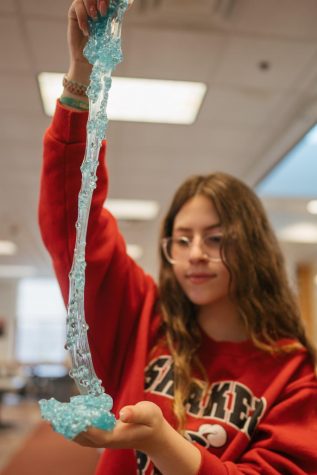
Like Solganik, others have made their own accounts. The Instagram accounts @glitterslimes and @snoopslimes have been active since 2016. They are the two most-followed slime accounts, with about 2 million followers each.
Kim Ruggeri is associate college lecturer in the Cleveland State University marketing department and faculty adviser of the CSU American Marketing Association. She said the success of Solganik and the other Instagram slime entrepreneurs can be explained by “influencer marketing,” which enhances connections with customers.
“A lot of businesses now know that consumers trust influencers more than they trust actual businesses. So she probably, to a lot of her followers, seems a lot more authentic and real than a company that’s selling slime,” Ruggeri said. She also added that buyers tend to trust influencers like Solganik more, so companies invest into having influencers promote their items.
Solganik got into slime in the seventh grade.“My friend had a slime account, and I would always come over and she would have slime. She had made videos and she started selling, too. I thought it was really cool, so I started my own,” she said.
Solganik admits that her slime business is a major commitment. “I dedicate all my time. If I’m trying to restock, I just do it all the time. I do it while I’m doing my homework. 24/7, basically. It’s always on my mind,” she said.
“On a weekend that I’m planning to restock, it’s, like, the whole day. I’ll wake up at 9 and I’ll work until 1 a.m. But I find it very enjoyable.”
Solganik usually does a restock about once every two weeks. During a restock, she makes varieties of slime, then announces to her followers what day she will post the products on her website for sale.
Solganik makes slime while doing homework after school and on weekends. She sells around 500 to 1,000 containers of slime in anywhere from a day to a week. Solganik has friends and an employee who help her on the weekends, and her mom helps pack the orders and mails them.
Solganik’s basement is dedicated to slime production. “Now my whole basement is redone. We have slime supplies everywhere,” said Solganik, who has one 20-quart mixer and hopes to get another one soon. “It could fit a small human. That’s where I make my slime.
“And we have walls of ingredients. There are a lot of ingredients and containers. There’s a lot of stuff,” she said.
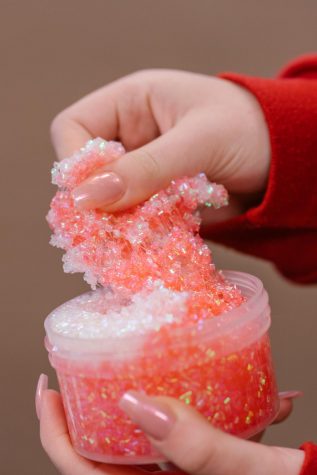
Maya’s mother, Wendy Solganik, thinks her daughter has succeeded in the slime industry because of her attention to detail. She said some slime companies use inferior materials.
“Maya makes extraordinary slime. She has really high standards because she sets the tone for the whole business,” she said. “If she doesn’t like the way a slime comes out, she will never sell that slime. That slime will sit in our basement until we put it in the trash.”
But selling slime was not Solganik’s original goal when she started her Instagram account.
“She was just gonna make slime videos. It wasn’t about manufacturing slime, it was just like, ‘Oh, I want to have a fun Instagram account where I make slime and I make cool videos.’ That’s really how it got started,” her mother said.
“She really, honestly, does not walk around telling people she has this giant Instagram account, and that she has this business, and that she’s made all sorts of money. She never tells anybody. She’s so modest about it, so I really appreciate that that’s how she’s behaving,” she said.
Laney Millard, a junior, started working for Solganik three months ago. She packs slime and borax bags that are complementary with the purchase to be used as an activator. The borax is used to revive slime if it melts later or arrives sticky.
“It’s actually a lot. She’s so young, and it’s actually a real business. There is so much work that I’ve been doing. It’s fun, though. I really like it,” Millard said.
Millard works for Solganik one day on the weekends and through the week as necessary. She said packing all the orders can be time consuming.“When she has a restock, it takes four days. There are so many orders. It’s crazy!” she said.
Solganik maintains a supply of 500 to 1,000 slimes in up to 15 unique styles. When someone purchases Solganik’s slime, she packages it into containers that hold seven or 20 ounces then ships it anywhere in the world.
Solganik sells different styles of slime. There is thick slime — a slime made with Elmer’s Glue-All. There is also butter slime, which is slime with clay in it. There is clear slime, which is made with clear glue. Then there is fishbowl slime, which is clear slime with fishbowl beads. There is cloud slime and icee slime, both of which have fake snow in them. There are also various types of slimes with different types of beads; one of the most popular is “floam,” or foam bead slime.
Customers can order through her website, tibbleslimes.com. She sells through Shopify, where she lists all of her slime during a restock. Solganik uses the app ShippingEasy to organize shipping. “I then print all the shipping labels, which have their address and stuff,” she said. The adhesive labels include what the customer ordered.
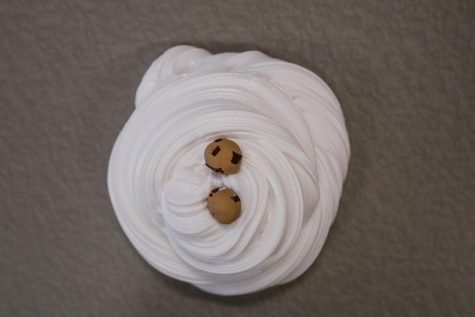
“After that, we put those stickers on bubble mailers. Then we stack up all the bubble mailers and we line them up against the slimes,” she said. “Then we grab a bubble mailer and the slime it says on it, and we bubble wrapper and put in the borax and instructions, then we close it,” she said.
Solganik handles all customer service, including complaints.“If someone gets accidentally sent the wrong slime, I just send them the slime they ordered, and they can keep the one that got sent to them,” she said. If there is an issue with the slime, Solganik said, it’s usually because people don’t really know how to play with it, adding too much borax or not following the instructions Solganik sends in the order.
“They’ll buy it and be like, ‘Something is so wrong,’ and I’ll refund them because it’s worth refunding them instead of trying to show them. That just makes everyone happy,” she said.
Solagnik’s most popular slime is called Cookie Dough Ice Cream, which is described on her website as a “super thick and glossy slime. Scented like vanilla ice cream” that “comes with two homemade cookie dough charms.” She has sold more than 1,800 units of it.
The slime community also hosts conventions that draw anywhere from 2,000-10,000 attendees, where popular slime artists will gather, sell slime and meet their followers. “Every few months I’ll go to this big meet-and-greet, where I’ll meet thousands of people,” she said. “They all come up to me, and they hug me like I’m famous, which is crazy.”
Maya’s mother said Maya is happiest at slime events, which she describes as “happy people doing happy things.”
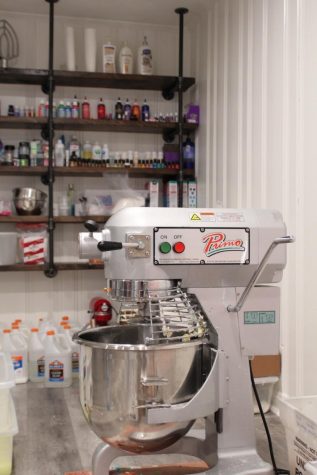
Solganik believes the presence of slime has redefined her social life. “After I did slime, I met so many people that I didn’t even know went to our school. I don’t know if it’s from slime, but it probably is. I have a big personality, and I think people also like me for my personality, but I don’t think I would have met as many people” without her business, she said.
Freshman Carys Johnson, one of Solganik’s friends, thinks the business is impressive.
“It’s crazy how she has actually created a living off of slime,” Johnson said. “She’s been doing it for almost two to three years now. How’s she able to manage that and school, and get good grades and stuff — it’s actually so impressive.”
“We are really proud of Maya,” Wendy Solganik said. “It’s amazing what she’s done. It’s amazing what she’s capable of handling. It’s amazing.”
Ruggeri said that influencer marketing should be here to stay, as long as influencers stay transparent.
“In general consumers are trying to get more transparency and authenticity, and that definitely comes more from an influencer person that it does for a company. That being said, I think where the problem could lie is if we stop trusting influencers. If the influencers are basically being bought out by companies and promoting whatever product they’re being paid to promote, then we won’t trust the influencers anymore,” she said.
“If we don’t trust them anymore, then that could go away. But I think this could keep growing as social media keeps growing.”
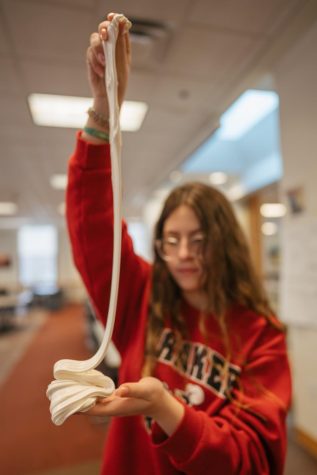
Ruggeri also said that because Solganik is young with a business, she could promote other young kids to realize they could start one, too.
“I think seeing someone like you doing it makes you think that it’s attainable. So, absolutely,” she said. “If she ever talks about how she started her business, or gives tips or something like that, I think it could get younger people to start seeing how they could do something like that, too.”
Solganik said her business equips her for later success. Though, she mentions that if school work gets harder, running a business might become more difficult.
“With school and everything, it’s a lot harder to keep it going. If school does not get more difficult, then I don’t think it will be that much of a hassle to keep doing. Depending on the classes I take, it will be harder and harder.
Even if Solganik does not always do slime, she hopes to always run a business.
“I don’t think this will be the last of something business-y type thing that I do,” she said. “I find it really interesting and whether or not I keep this going, I think I’ll end up doing something like it.”
Comment using your Facebook, Yahoo, AOL or Hotmail account


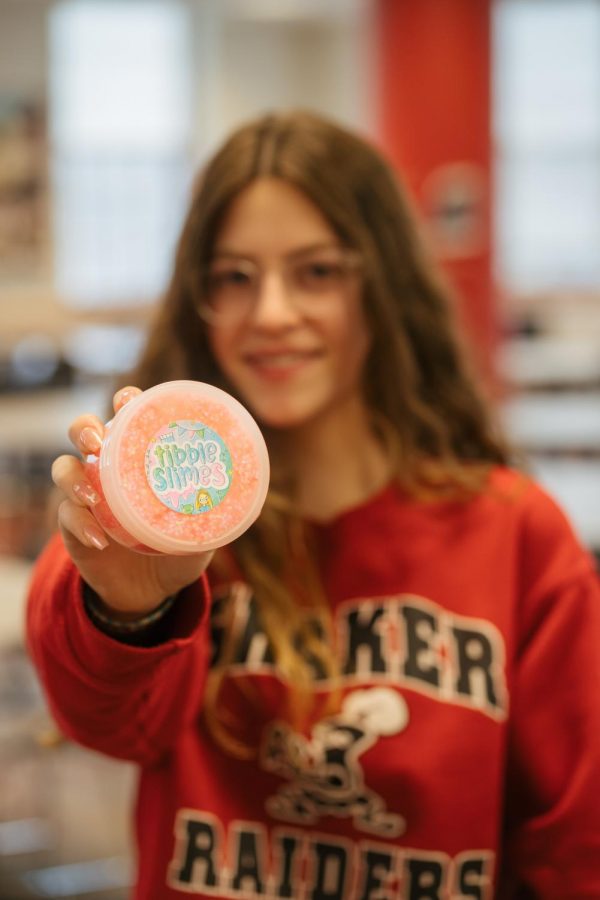


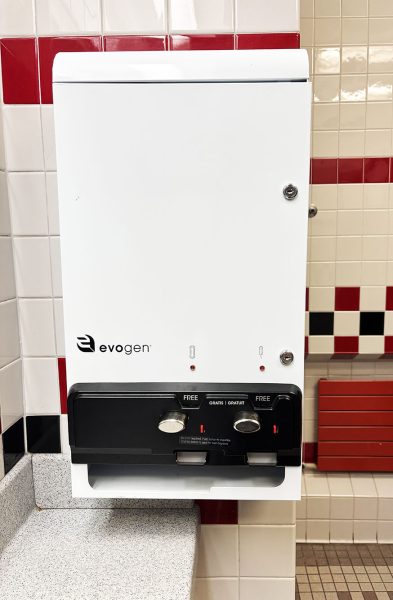

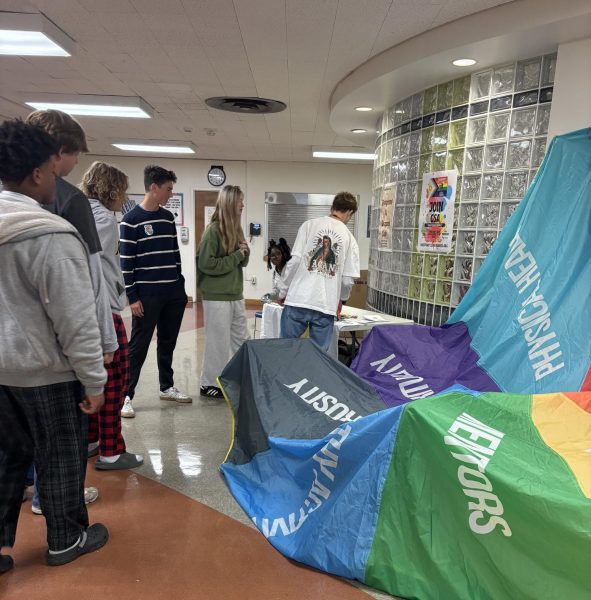




Aryan | Mar 8, 2023 at 12:41 am
What a great Entrepreneur Maya! You are an inspiration for young aspiring entrepreneurs. Keep chasing these cool business ideas and growing influencer marketing. I really like the cookie dough slime, would love to purchase one. Keep working hard and exploring the entrepreneur in you.